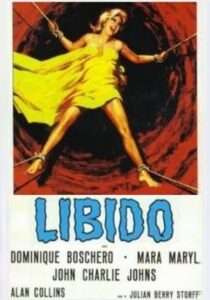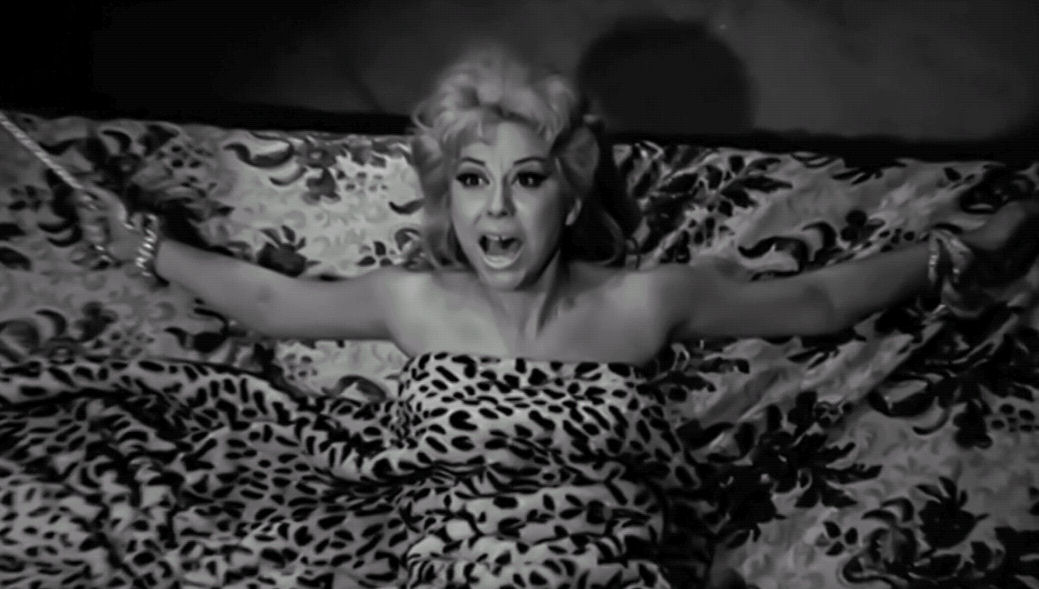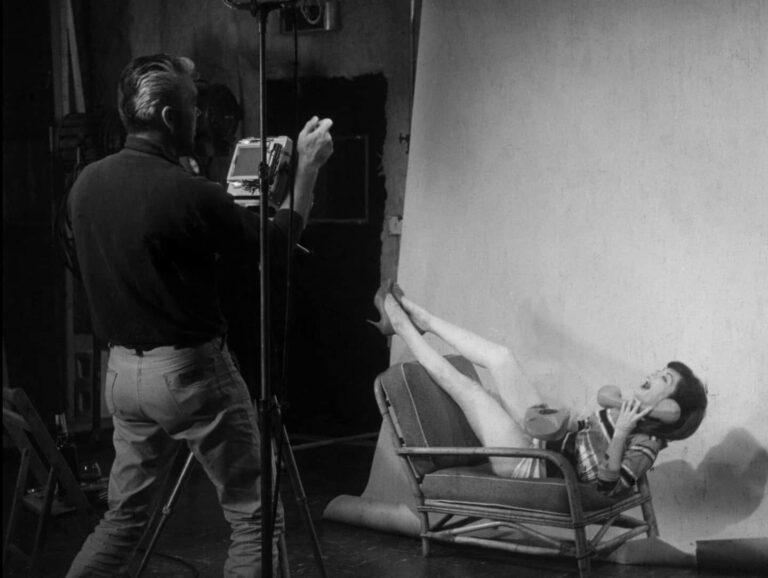Directed by Ernesto Gastaldi and Vittorio Salerno
Written by Vittorio Salerno and Ernesto Gastaldi
Starring:
- Giancarlo Giannini (credited as John Charlie Johns) as Christian Coreau
- Dominique Boschero as Helene Coreau
- Mara Maryl as Brigitte Benoit
- Luciano Pigozzi (credited as Alan Collins) as Paul Benoit
Rating: ![]()
 This kinky Italo gothic picture sort of verifies how the psychosexual motifs of the gialli are rooted in Freudian notions. Not for nothing does it commence by quoting Freud’s own psychoanalytic explanation of Libido, and with that alone it devises a whole framework that rationalizes the libidinal drives of its twisted lead character according to that definition.
This kinky Italo gothic picture sort of verifies how the psychosexual motifs of the gialli are rooted in Freudian notions. Not for nothing does it commence by quoting Freud’s own psychoanalytic explanation of Libido, and with that alone it devises a whole framework that rationalizes the libidinal drives of its twisted lead character according to that definition.
Well-versed Euro thriller screenwriter Ernesto Gastaldi co-directs and co-writes alongside Vittorio Salerno the story of young Christian (Giancarlo Giannini in his big film debut), who as a child witnesses his father murdering a woman during one of his S&M sessions. Years later he returns to the sinister villa where he grew up and where all his traumas were engendered. Giallo connoisseurs and savvy viewers won’t be surprised by the narrative patterns here; they hint at every twist of malice and the inevitable destination it all leads to. While Gastaldi remains, in my estimation, the undisputed wordsmith of the Gialli, this screenplay has suffered the most over time, largely due to unavoidable and natural factors. Naturally, most of the genre’s subsequent works—many penned by him—revisit the same themes established here, but they do so with far greater sophistication. The unavoidable reality is that its plot twist has been perfected numerous times, not only within the genre’s classics but also across cinematic masterpieces as a whole. Nonetheless, Libido remains a cornerstone in the history of giallo filmmaking—every bit as canonical as Mario Bava’s Blood and Black Lace, released just a year earlier.
I believe its significance lies in its innovative approach to eroticizing the motifs of the genre—not through graphic violence per se (though this would later become a hallmark) but through a meticulous aesthetic strategy that favors suggestion over explicitness. If there’s one thing Libido excels in, it’s the way it sensually manifests perversity, artfully staged as gothic romanticism. And if we consider how this gothic romanticism ultimately transforms into a monochromatic giallo—pure in its psychosexual deconstruction of the motifs that traditionally define an Italian thriller as a Giallo—then Libido has every quality to be regarded as a prototype of the genre. But as much as I appreciate its theoretical potential, the film rarely achieves any truly gripping or convincing emotion. Giancarlo Giannini shines in the lead role, but he, like the narrative, is insufficiently fleshed out. Ultimately, the movie feels more like a showcase of elegant visuals than a penetrating exploration of its character’s sexual delirium.
The film is remarkable in its commitment to deadpan formalism, yet it leaves a lingering dissatisfaction. Its most significant flaw, in my view, is its reluctance to fully examine the troubled psyche of its central character. It leaves me with lingering questions that continue to puzzle me: was his father a sex maniac, or simply someone who enjoyed S&M but took it too far? These are two distinct possibilities, yet the movie never clarifies exactly what Christian witnessed in that room. From my perspective, many loose ends remain unresolved, undermining the development of the events. A strange strategy—or perhaps a misstep—by Gastaldi. Still, after watching Libido, I can’t help but marvel at how essential Gastaldi’s literary contributions have been to the genre. Even in his less polished works, he showcases his remarkable talent for crafting deliciously macabre plot twists. The manner in which Libido employs Freudian motifs as a foundational element offers a fascinating parallel to The Strange Vice of Mrs. Wardh, another screenplay co-crafted by Gastaldi. Examined side by side, these works illuminate the considerable evolution of thematic and aesthetic depth from Libido to Sergio Martino’s film.









